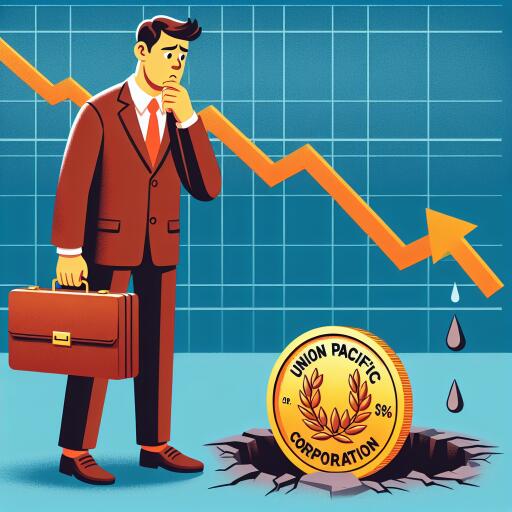Union Pacific: Investing In The Dip Doesn’t Seem Worth It (NYSE:UNP)
Union Pacific Corporation (NYSE:UNP), a cornerstone of the U.S. railroad industry, has experienced a notable dip in its stock value, dropping approximately 8% since the beginning of the year. This downward trend has led investors to question whether this presents a ripe “buy the dip” opportunity or signals the start of a broader decline in the company’s market value.
Exploring deeper into Union Pacific, a company that has played a pivotal role in U.S. transportation across 23 states since its inception in 1862, we uncover an organization that is far from reaching a growth plateau. Despite its dominant market position, Union Pacific’s journey is far from over, with plenty of growth opportunities ahead.
However, the past year has not been smooth sailing for Union Pacific, with several factors contributing to its stock performance downturn. As we dived into the company’s recent operational improvements, it became evident that the company was making strides in enhancing its efficiency. Enhancements in freight velocity, locomotive productivity, extended train lengths, better labor productivity, and more efficient fuel consumption were some of the notable improvements highlighted in the first quarter of the year.
In spite of these operational gains, Union Pacific’s revenue saw a slight decrease, primarily affected by a 1% drop in freight revenue. This decline seems aligned with the broader economic context, where inflation and various macroeconomic factors play critical roles. Yet, the company’s ability to maintain its pricing power amidst these challenges is a testament to its robust market position.
Delving into Union Pacific’s financial health, we observe a company that balances its significant market share with a sizeable debt load, though its debt metrics fall within acceptable thresholds. The ability to pass through inflation and adjust input costs favorably positions Union Pacific for performance throughout economic cycles, even as inflation rates stabilize.
However, our valuation analysis, incorporating a dividend discount model to account for Union Pacific’s cyclicality, indicates a fair value considerably lower than its current market price. This discrepancy, alongside an evaluation of the company’s price multiples and technical outlook, paints a picture of a stock that may be overvalued, or at least fully valued, in the current market.
Moreover, the stock’s recent performance, in line with its direct peers but lagging in achieving oversold territory based on its Relative Strength Index (RSI), suggests limited immediate catalysts for a structural rally. Coupled with 17 consecutive years of dividend growth, Union Pacific showcases its dividend potential. Yet, the stock’s Value at Risk (VaR) analysis reveals a level of price risk that could nullify the benefits of its income yield.
Among the risk factors considered in our analysis, we highlight concerns over the company’s freight volume in the coming quarters, its heavily-leveraged balance sheet, and valuation challenges posed by its high price multiples compared to sector medians and historical averages.
In conclusion, while Union Pacific exhibits strengths through its operational efficiencies, market share, and cost management, the overarching economic environment and valuation concerns cast doubt on the attractiveness of investing in the dip. Therefore, we maintain a neutral view on Union Pacific, suggesting investors approach with caution.
